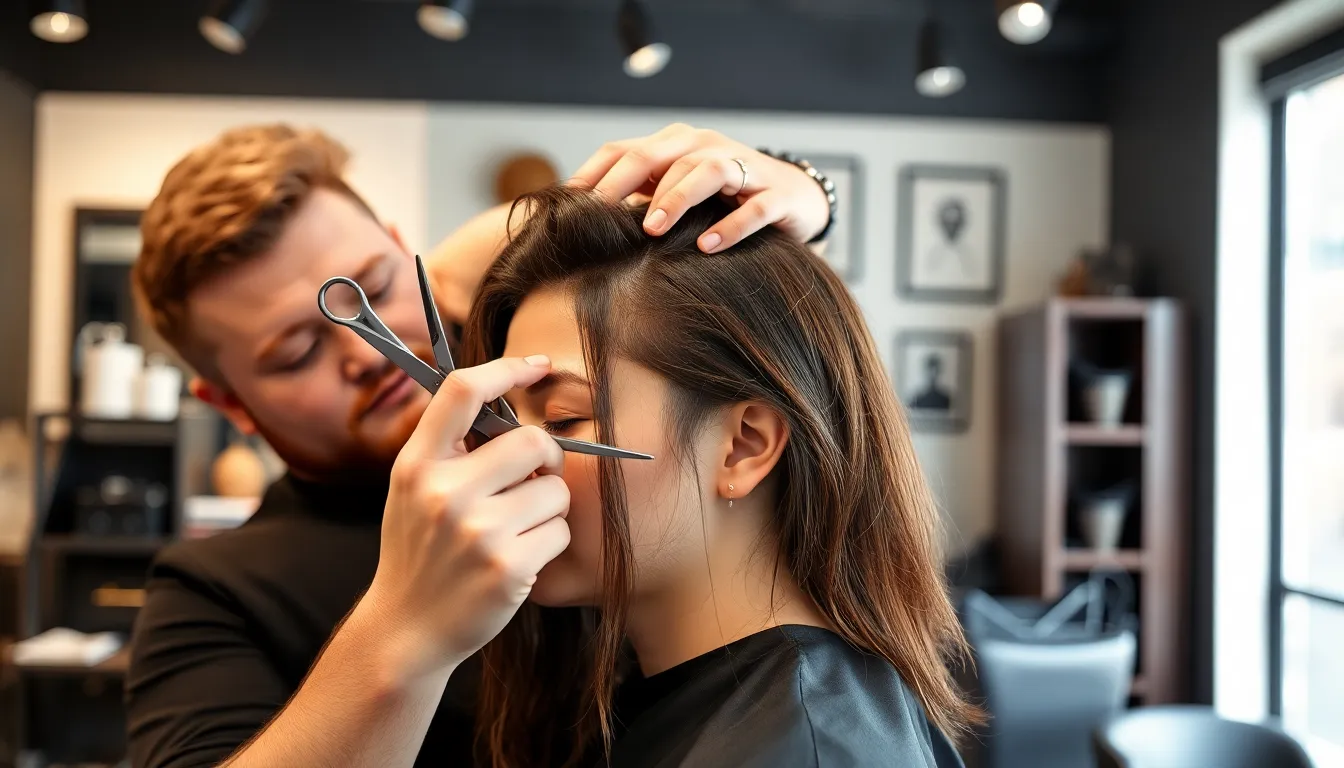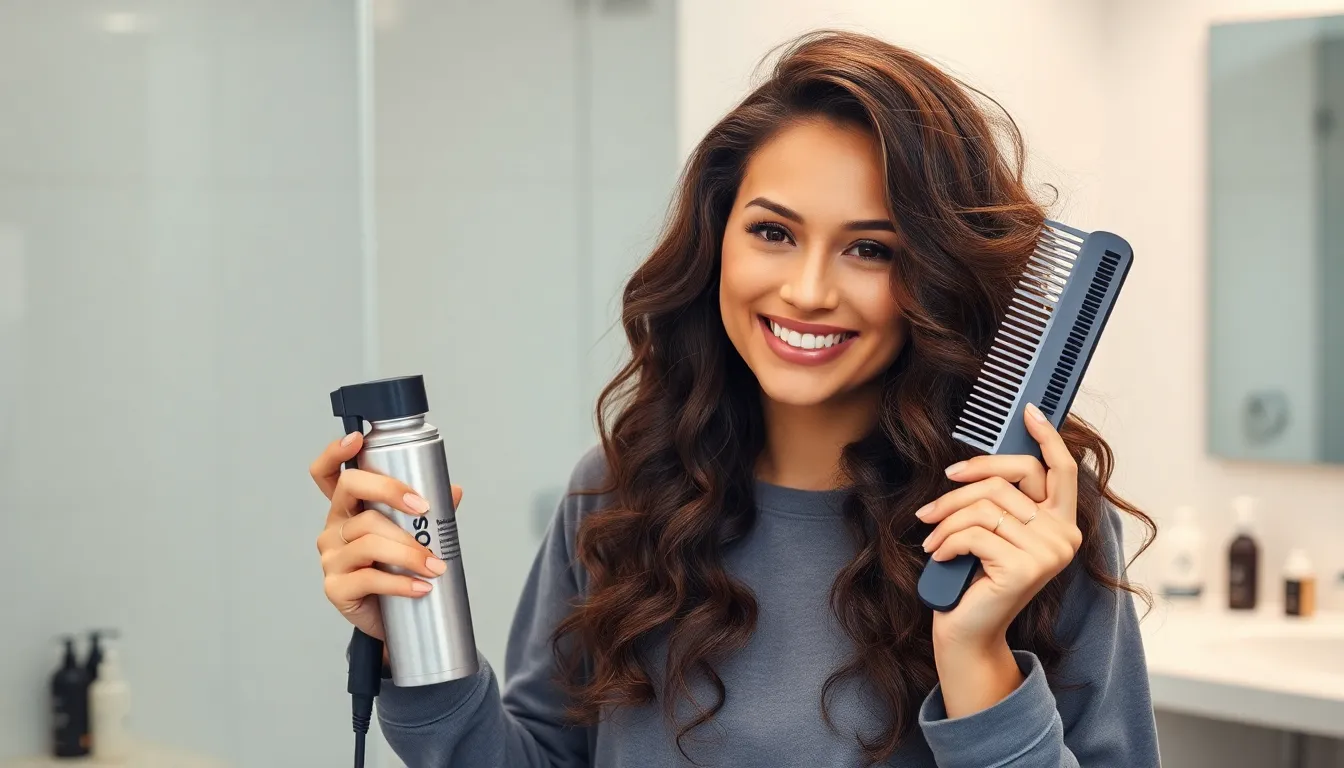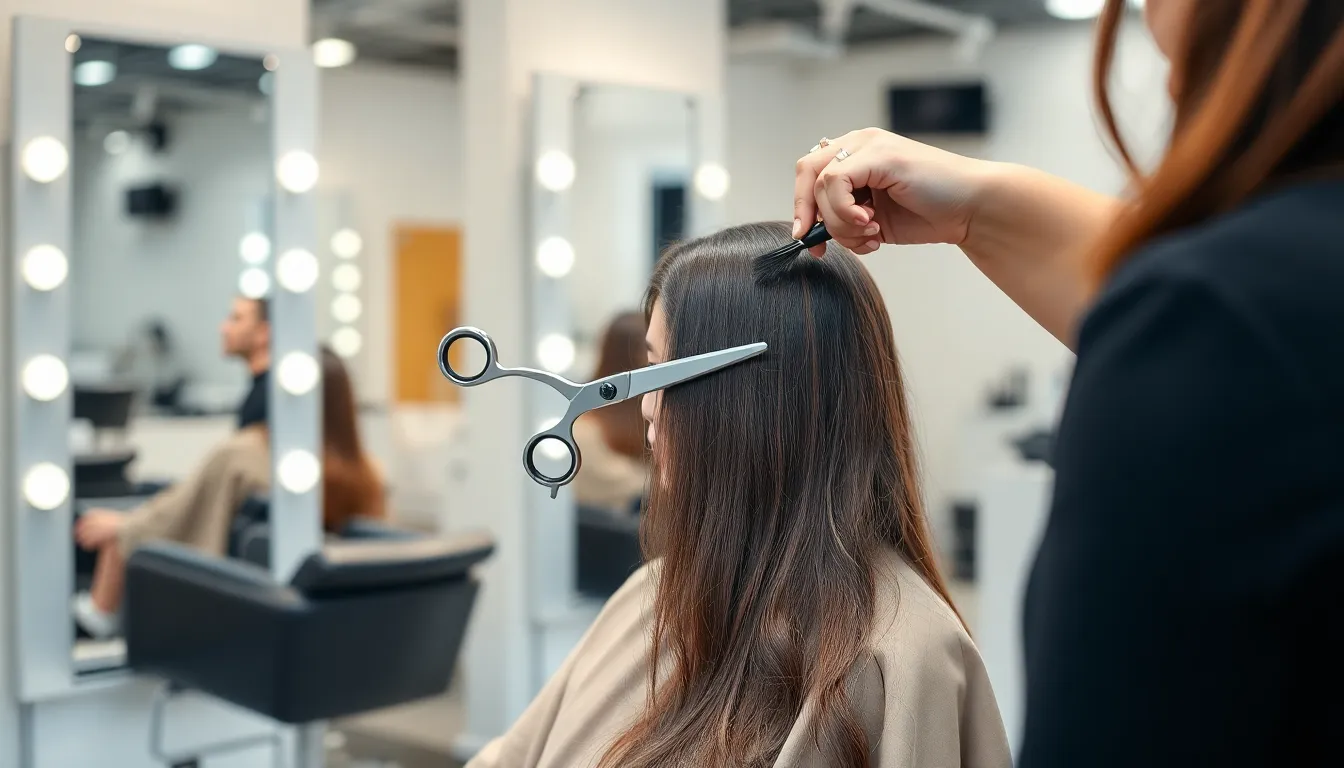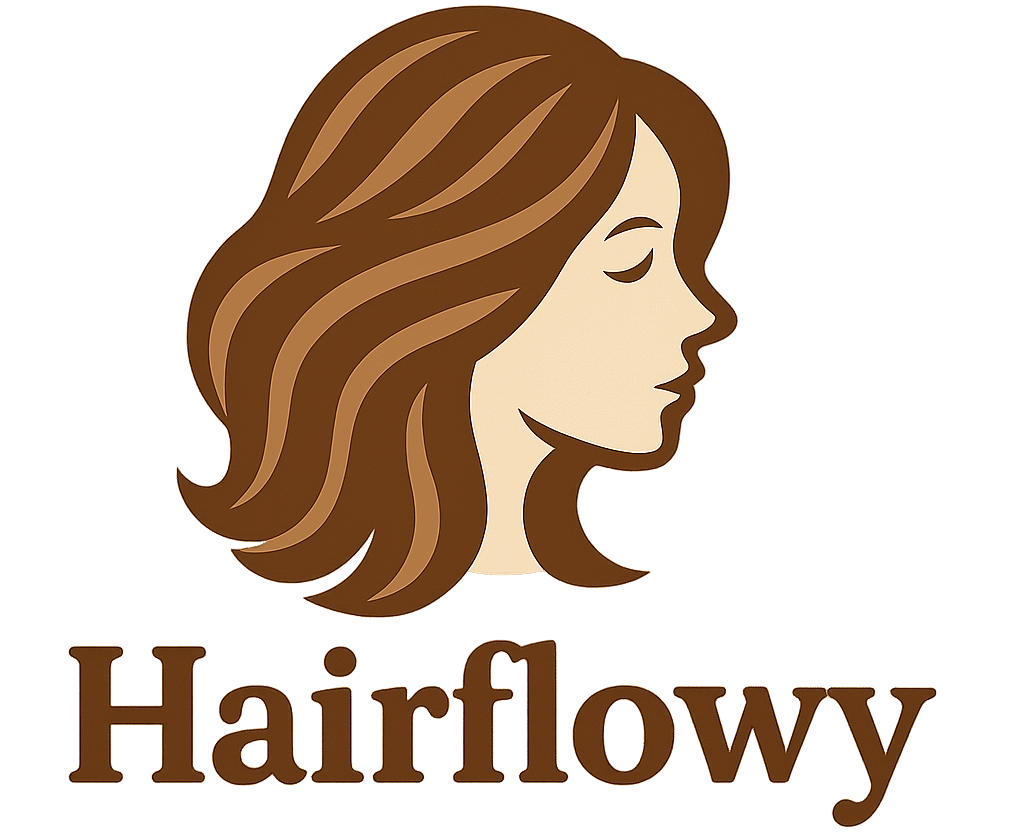Thick hair can be both a blessing and a challenge – while we’re blessed with natural volume and texture that many people envy, finding the right hairstyle that works with our hair’s density can feel overwhelming. We’ve all been there: standing in front of the mirror wondering how to tame our mane or make it work in our favor rather than against us.
The good news? Thick hair opens up a industry of styling possibilities that simply aren’t achievable with finer hair types. From bold layers that add movement to sleek cuts that showcase our hair’s natural body, we can embrace styles that make a statement while keeping our locks manageable and healthy.
Whether you’re looking to reduce bulk, enhance your natural texture, or completely transform your look, we’ve compiled the most effective hairstyle ideas specifically designed for thick hair. These aren’t just trendy cuts – they’re strategic styles that’ll help you fall in love with your hair’s natural volume while making your daily routine easier than ever.
Short Hairstyles That Tame Thick Hair
Short hairstyles offer excellent answers for managing thick hair’s natural volume while creating sophisticated looks that require minimal daily styling.
Pixie Cuts With Textured Layers
Pixie cuts transform thick hair into chic and manageable styles that eliminate the weight and bulk that often frustrate thick hair owners. Textured layers throughout the cut create movement and prevent the hair from appearing too dense or heavy around the face. We recommend asking your stylist to add graduated layers that remove excess weight while maintaining the hair’s natural body and texture.
Different pixie variations work exceptionally well for thick hair types. Side swept pixies with longer bangs create asymmetrical interest while thinning out the heaviest sections. Choppy pixie cuts with piece-y layers add texture and dimension without overwhelming your facial features. Tapered pixie styles gradually reduce length from the crown to the nape, creating a flattering silhouette that showcases thick hair’s natural volume.
Bob Cuts With Strategic Thinning
Bob cuts paired with strategic thinning techniques create the perfect balance between style and manageability for thick hair textures. Professional thinning removes excess bulk from the interior layers while preserving the bob’s classic shape and structure. We suggest choosing chin length or slightly longer bobs that provide enough weight to prevent the hair from appearing too voluminous at the roots.
Layered bob variations offer multiple styling options for thick hair management. A-line bobs with subtle layers create sleek profiles that taper beautifully from back to front. Blunt bobs with internal thinning maintain clean lines while reducing density throughout the cut. Inverted bobs concentrate volume at the crown while tapering toward the nape, creating flattering shapes that complement thick hair’s natural fullness.
Asymmetrical Lobs for Volume Control
Asymmetrical lobs provide sophisticated answers for controlling thick hair’s volume while maintaining fashionable longer lengths. The uneven cutting technique naturally reduces bulk by creating varied lengths that prevent the hair from accumulating too much weight in any single area. We find that asymmetrical cuts work particularly well for thick hair because they use the hair’s natural density to create dramatic style contrasts.
Various asymmetrical lob techniques offer different volume control benefits for thick hair types. Deep side part lobs create dramatic sweeping effects that distribute weight unevenly across the head. Graduated asymmetrical cuts feature shorter layers on one side that gradually lengthen toward the opposite side. Angular lobs with sharp cutting lines create geometric shapes that showcase thick hair’s ability to hold structured styles without additional products or tools.
Medium Length Styles for Thick Hair Management

Medium length cuts offer the perfect balance between manageability and styling versatility for thick hair. These styles work with your hair’s natural density rather than fighting against it.
Shoulder Length Waves With Face Framing
Shoulder length waves create movement while maintaining enough weight to control thick hair’s volume. We recommend adding layers that frame your face to remove bulk from heavy areas while accentuating your best features. This cut works exceptionally well because it distributes weight evenly throughout your hair, preventing the dreaded triangle shape that thick hair often creates.
Strategic layering around the jawline and cheekbones helps soften angular features while reducing overall hair weight. Your stylist can customize the face framing layers based on your exact face shape, creating a personalized look that enhances your natural beauty. Waves add texture and dimension without requiring extensive daily styling, making this an ideal choice for busy lifestyles.
Shag Cuts With Thinning Techniques
Shag cuts use choppy layers to dramatically reduce bulk while creating modern, edgy styles perfect for thick hair. We love how this cut uses varying layer lengths to create natural movement and prevent your hair from appearing too heavy or triangular. Professional thinning techniques can be applied throughout the cut to further manage volume without sacrificing style.
Choppy layers work by removing weight from exact sections while maintaining overall length and fullness. Your stylist can focus thinning techniques on areas where your hair tends to be heaviest, such as around the crown or nape area. This combination approach gives you the textured, lived in look that’s currently trending while solving thick hair management challenges.
Blunt Cuts With Internal Layering
Blunt cuts provide clean lines and sophisticated appeal when paired with strategic internal layering for thick hair management. We recommend this technique because it maintains the polished appearance of a blunt cut while secretly reducing weight through hidden internal layers. This versatile approach suits various hair textures and can be adapted for straight, wavy, or curly thick hair.
Internal layering involves cutting shorter layers beneath the exterior hair length, creating movement and reducing bulk without visible choppy ends. Your stylist removes weight from the interior sections while keeping the perimeter intact, resulting in a sleek finish that’s easier to style. This technique enhances natural movement while preventing the heavy, flat appearance that solid blunt cuts can create on thick hair.
Long Hairstyles That Work With Thick Hair

Thick hair truly shines when you embrace longer lengths that showcase its natural volume and texture. We’ve found that strategic cutting techniques can transform heavy, unmanageable locks into flowing, beautiful styles.
Layered Cuts for Movement and Flow
Layered cuts remain the gold standard for thick hair because they create movement and flow by reducing bulk throughout your strands. Softer layers that taper off towards the ends enhance your hair’s natural texture while preventing that dreaded triangle shape. We recommend asking your stylist for face framing layers that start around your collarbone to maintain length while adding dimension.
These cuts work particularly well because they distribute weight evenly from roots to ends. Professional stylists often use point cutting techniques to create seamless transitions between layers. Your thick hair will move more naturally with each step, creating that coveted bouncy effect that’s impossible to achieve with blunt cuts.
V-Shape Cuts to Reduce Bulk
V-shape cuts effectively reduce bulk while maintaining impressive volume throughout your thick hair. This cutting technique removes weight from the interior sections while keeping your perimeter full and dramatic. We’ve seen this style work exceptionally well for those with very thick hair who want to keep their length intact.
The V-shape distributes your hair’s weight more evenly, preventing that heavy feeling at your neck and shoulders. Stylists create this look by cutting your hair shorter in the back and gradually lengthening it toward the front. Your thick hair’s natural density actually enhances this cut’s dramatic silhouette, creating a stunning cascading effect.
Long Bobs With Graduated Layers
Long bobs with graduated layers offer the perfect compromise between shorter styles and full length hair. This versatile option adds movement and flow while keeping your thick hair completely manageable for daily styling. We particularly love how graduated layers help distribute your hair’s weight, making it significantly easier to achieve sleek or textured looks.
The lob length typically falls between your shoulders and collarbone, providing enough length to pull back while offering styling flexibility. Graduated layers start shorter at the back and gradually increase in length toward the front, creating natural movement. Your thick hair’s volume actually enhances this cut’s sophisticated silhouette, giving you that coveted effortless elegance that’s perfect for any occasion.
Curly Hairstyle Ideas for Thick Hair

Curly hair combined with natural thickness creates unique styling opportunities that require specialized cutting techniques. We’ll explore three effective approaches that work beautifully with your hair’s natural curl pattern and density.
Defined Curl Cuts With Weight Removal
Deva cuts revolutionize how we approach thick, curly hair by strategically removing weight while preserving curl integrity. This specialized technique involves cutting each curl individually in its natural state, allowing the stylist to see exactly how much weight to remove from each section. Professional curl specialists use this method to enhance your hair’s natural spring and movement without creating unwanted bulk.
Layered curl cuts create weightless shapes that maximize volume and movement throughout your thick curly hair. These cuts work exceptionally well with medium to long lengths, helping distribute weight evenly while preventing the dreaded triangle shape. Stylists focus on removing internal weight rather than length, which allows your curls to bounce freely and maintain their natural texture.
Curly Shag Styles for Texture
Shaggy layered cuts with bangs offer creative answers for controlling super thick curly hair while adding face framing elements. This modern approach combines choppy layers with strategic thinning to taper volume throughout your hair. Bangs can be customized to complement your face shape, whether you prefer wispy curtain bangs or bold, full fringe styles.
Textured shag cuts use multiple layer lengths to create movement and reduce bulk simultaneously. These styles work particularly well for those who want an edgy, modern look that still feels manageable for daily styling. The varied layer lengths help break up the density while maintaining enough weight to keep your curls defined and bouncy.
Long Curly Layers for Shape
Mid length and longer curly styles provide the most balanced approach for thick, curly hair management. These cuts typically fall between the shoulders and mid back, offering enough weight to keep curls from becoming too voluminous while providing styling versatility. The length helps anchor your curls and prevents them from expanding outward, creating a more elongated silhouette.
Relaxed low updos showcase thick curly hair’s natural beauty through feminine, romantic styling options. These styles often incorporate loose side braids that enhance your natural curl pattern while keeping hair manageable for special occasions. Adding subtle highlights can create depth and dimension, making your thick curls appear even more luxurious and multifaceted.
Straight Hairstyle Ideas for Thick Hair

Straight thick hair offers incredible versatility when styled with the right cutting techniques. These sophisticated styles work with your hair’s natural density to create polished, manageable looks.
Sleek Straight Cuts With Internal Layers
Sleek straight cuts with internal layers transform thick hair into elegant, movement-rich styles that maintain your natural length while reducing bulk. Professional stylists strategically place these layers beneath the surface of your hair, creating texture and flow without compromising the overall silhouette. Weight distribution becomes more balanced with this technique, allowing your thick straight hair to move naturally instead of hanging heavily.
Internal layering techniques work particularly well for thick hair because they remove excess weight from the interior sections while keeping the outer perimeter intact. Your hair maintains its sleek appearance while gaining enhanced maneuverability and bounce. This cutting method prevents the common issue of thick straight hair appearing flat or lifeless at the roots.
Blunt Straight Styles With Thinning
Blunt straight styles with strategic thinning create clean, sophisticated looks that work exceptionally well for thick hair that isn’t overly dense throughout. Stylists combine the precision of a blunt cut with selective thinning techniques to reduce volume in targeted areas. This approach maintains the sharp, polished edge of a blunt cut while making the style more manageable for daily styling.
Strategic thinning focuses on removing weight from exact sections rather than throughout the entire head, preserving the integrity of your thick straight hair. The technique works best when applied to the mid-lengths and ends, leaving the crown area fuller for natural volume. Your hair achieves an elegant, refined appearance that’s both striking and practical for everyday wear.
Straight Hair With Side Swept Bangs
Straight hair with side swept bangs adds sophistication and balance to thick hair while creating a flattering frame around your face. Side swept bangs work particularly well with thick straight hair because they use the natural weight and density to create smooth, sweeping lines. This style helps break up the heaviness that thick hair can sometimes create around the face.
Face framing elements become more pronounced with side swept bangs, as they draw attention to your eyes and cheekbones while softening angular features. The bangs can be cut with varying lengths and angles to complement different face shapes, making this a versatile option for thick straight hair. Your overall look gains elegance and movement without requiring extensive daily styling or maintenance.
Updo and Styling Options for Thick Hair

Moving from everyday cuts to special occasion styles, we’ll explore sophisticated updos that harness thick hair’s natural volume. These elegant arrangements transform your dense locks into polished looks perfect for formal events or simply elevating your daily style.
Low Buns and Chignons
Sleek low buns create timeless elegance by securing thick hair at the nape of your neck. We recommend applying hair serum or oil before styling to maintain a smooth, polished finish that controls flyaways and enhances shine. This classic style works exceptionally well for thick hair since the natural density provides the fullness needed for an impressive silhouette.
Messy buns offer relaxed sophistication by loosely gathering your thick hair into an intentionally undone arrangement. Starting with slightly textured hair, we suggest twisting sections loosely and pinning them randomly around a central point. The natural volume of thick hair creates beautiful dimension in this effortless style, with strategically placed stray strands framing your face for added softness.
Braided Styles for Heavy Hair
Thick French braid buns combine intricate braiding with practical updo styling to manage dense hair effectively. Beginning with a French braid at the crown, we continue down to the nape before coiling the remaining length into a secure bun. This technique distributes the weight of thick hair evenly while creating an elegant focal point.
French braid inspired updos offer versatility for both formal and casual occasions through adaptable braiding patterns. We can modify the traditional French braid by incorporating side braids, Dutch variations, or multiple smaller braids that converge into a single updo. These styles work particularly well with thick hair because the natural texture holds braids securely without excessive product.
Half-Up Styles That Manage Volume
Half up ponytails provide simple volume control by securing the top section of thick hair while leaving the bottom portion flowing freely. We gather hair from the temples and crown area, creating a high or mid level ponytail that reduces bulk at the roots. This style maintains thick hair’s natural movement while preventing overwhelming volume around the face.
Half up braids distribute weight evenly by incorporating braided elements into partial updos that showcase thick hair’s texture. Starting with small braids along the hairline, we can gather them into a central ponytail or twist them into a decorative knot. Bobby pins designed specifically for thick hair ensure secure hold, while texturizing products enhance the natural volume and improve overall manageability.
Professional Cutting Techniques for Thick Hair

Professional cutting techniques transform thick hair management from a daily struggle into effortless styling. We’ll explore specialized methods that reduce bulk while improving your hair’s natural texture and movement.
Razor Cutting for Texture
Razor cutting creates movement and texture that traditional scissors simply can’t achieve on thick hair. Professional stylists perform this technique on damp hair to maintain control while adding ever-changing layers throughout your hairstyle. The razor blade naturally feathers the ends of each strand, creating a softer finish that eliminates harsh lines and reduces bulk simultaneously.
We recommend razor cutting for clients who want to enhance their hair’s natural movement without losing density at the roots. This technique works exceptionally well on thick hair because it removes weight while preserving the overall volume that makes thick hair so versatile.
Point Cutting for Softness
Point cutting involves holding scissors vertically and making small snips at the hair ends to add texture and reduce bulk. This technique enhances softness and creates a more natural finish than blunt cutting methods. Professional stylists use point cutting to break up solid lines and add movement to thick hairstyles.
The vertical cutting motion creates irregular edges that catch light differently, giving your thick hair more dimension and visual interest. We find this technique particularly effective for thick hair because it eliminates the heavy, weighed down appearance that often accompanies traditional horizontal cuts.
Thinning Shears for Volume Reduction
Thinning shears remove excess bulk from thick hair after the initial cut, creating a more manageable texture without sacrificing style. Professional stylists use these specialized scissors strategically to reduce density in exact areas while maintaining overall hair health. The key lies in using thinning shears sparingly to avoid creating a lifeless appearance.
We recommend using thinning shears primarily on the interior layers of thick hair, leaving the outer layer intact for a polished finish. This technique allows for better product distribution and easier styling while preserving your hair’s natural body and movement.
Styling Tips and Products for Thick Hair

Selecting the right products and tools transforms thick hair from a daily challenge into manageable, beautiful styles. We’ll guide you through essential styling elements that enhance your hair’s natural texture while simplifying your routine.
Heat Protection and Smoothing Products
Heat protectants serve as your first line of defense when styling thick hair with hot tools. Apply thermal protection sprays or creams from mid-length to ends before using curling irons, flat irons, or blow dryers to prevent damage from high temperatures. Smoothing creams work double duty by reducing frizz while adding shine to thick hair’s natural texture. Serums containing silicone create a protective barrier that seals the hair cuticle, improving smoothness and preventing moisture loss during heat styling.
Volumizing vs. Taming Product Choices
Volumizing products add lift and body when your thick hair feels weighed down, particularly at the roots. Choose lightweight mousse or root-lifting sprays that create movement without adding bulk to already dense hair. Taming products control frizz and add smoothness when your thick hair becomes unruly or difficult to manage. Anti-frizz creams and smoothing oils work best for controlling flyaways while maintaining your hair’s natural movement and bounce.
Tools That Work Best for Thick Hair
Wide-tooth combs gently detangle wet thick hair without causing breakage or pulling. Use these combs exclusively on damp hair to prevent damage and distribute conditioning products evenly throughout your strands. Round brushes help distribute heat evenly during blow-drying sessions, creating smooth, polished results for thick hair. Diffusers enhance natural texture and reduce frizz when attached to your blow dryer, making them perfect for maintaining thick hair’s volume while controlling unwanted frizz. Professional-grade curling irons and flat irons with adjustable temperature settings style thick hair effectively when paired with proper heat protection products.
Maintenance Tips for Thick Hairstyles

Keeping thick hairstyles looking their best requires consistent care and strategic maintenance approaches. We’ll explore essential maintenance techniques that keep thick hair healthy and manageable.
Regular Trimming Schedules
Schedule trims every 6-8 weeks to maintain hair health and prevent split ends from traveling up the hair shaft. Regular trimming becomes especially necessary for thick hair since damaged ends can make already dense hair appear even bulkier and unmanageable.
Book appointments before your hair starts looking overgrown rather than waiting for obvious signs of damage. Thick hair tends to grow faster at the roots while developing split ends more quickly due to its density.
Communicate with your stylist about maintaining your hairstyle’s shape between appointments. Professional stylists can recommend exact trimming schedules based on your hair’s growth pattern and the complexity of your cut.
Consider seasonal adjustments to your trimming schedule, as thick hair may require more frequent maintenance during humid months when it tends to expand and lose its shape faster.
At-Home Thinning Techniques
Use thinning scissors carefully to reduce bulk between professional appointments, focusing on small sections at a time to avoid creating uneven patches. Start with areas that feel heaviest, typically around the crown and sides.
Apply the point cutting technique with regular scissors by cutting into the hair at an angle rather than straight across. This method creates natural texture and reduces weight without creating blunt lines.
Section your hair properly before attempting any thinning techniques, working with damp hair that’s been combed smooth. Take 1-2 inch sections and thin only the mid-lengths to ends, avoiding the root area.
Exercise extreme caution when using at-home thinning tools, as thick hair can quickly become over-thinned and difficult to correct. Start conservatively and gradually remove more hair if needed.
Professional Maintenance Recommendations
Add layers strategically through professional cutting to reduce bulk while improving your hairstyle’s movement and styling options. Layered cuts distribute weight more evenly throughout thick hair, making it easier to manage daily.
Invest in thinning shears used by professional stylists who can remove weight without cutting length or compromising your hairstyle’s integrity. Professional thinning techniques target exact areas where bulk creates styling challenges.
Schedule deep conditioning treatments every 4-6 weeks to maintain moisture levels in thick hair, which tends to dry out faster due to its density. Professional treatments penetrate deeper than at-home products.
Request texture consultations with your stylist to determine the best maintenance routine for your exact hair type and lifestyle. Different thick hair textures require customized approaches to maintain optimal health and appearance.
Conclusion
Thick hair presents incredible styling opportunities when we work with its natural density rather than against it. From chic pixie cuts to flowing long layers we’ve explored countless ways to transform your thick locks into manageable gorgeous styles.
The key lies in understanding that thick hair needs strategic cutting techniques and proper products to reach its full potential. Whether you prefer sleek straight styles textured curls or elegant updos there’s a perfect solution waiting for your unique hair type.
Remember that regular maintenance and the right tools make all the difference in keeping your thick hair looking its best. With these techniques and tips you’re equipped to embrace your hair’s natural volume and create stunning looks that work with your lifestyle.
Your thick hair isn’t a challenge to overcome—it’s an asset to celebrate and style with confidence.
Frequently Asked Questions
What are the best short hairstyles for thick hair?
The most effective short hairstyles for thick hair include pixie cuts with textured layers, bob cuts with strategic thinning, and asymmetrical lobs. These styles work by removing bulk while maintaining movement and sophistication. Pixie cuts create chic looks with minimal styling, while bobs balance manageability with style when cut at chin-length or slightly longer.
How can I manage volume in medium-length thick hair?
Medium-length styles like shoulder-length waves with face-framing layers help control volume while preventing the triangle shape. Shag cuts with choppy layers reduce bulk and create modern looks. Blunt cuts with internal layering maintain polish while discreetly reducing weight, making daily styling easier and enhancing natural movement.
What long hairstyles work best for thick hair?
Layered cuts create movement by reducing bulk, while V-shape cuts effectively reduce weight while maintaining volume. Long bobs with graduated layers offer versatility for managing thick hair. These strategic cutting techniques distribute weight evenly, allowing thick hair to flow naturally with bounce and elegance.
How should curly thick hair be cut and styled?
Curly thick hair benefits from specialized cuts like Deva cuts that remove weight while preserving curl integrity. Layered curl cuts focus on internal weight removal for medium to long lengths. Shag styles with bangs control volume while adding face-framing elements, and textured shag cuts provide modern, edgy appeal.
What are the best straight hairstyles for thick hair?
Straight thick hair looks great with sleek cuts featuring internal layers that reduce bulk while maintaining length. Blunt styles with strategic thinning combine precision with manageability. Adding side-swept bangs creates sophistication and frames the face beautifully while enhancing the natural density of thick hair.
What updo options work well for thick hair?
Thick hair excels in updos like sleek low buns and messy buns that utilize natural volume. Braided styles including thick French braid buns offer elegance and practicality. Half-up styles like ponytails and braids manage volume while showcasing texture, distributing weight evenly for better manageability.
What professional cutting techniques help manage thick hair?
Razor cutting creates movement and texture by feathering ends without losing root density. Point cutting adds softness and dimension, while thinning shears strategically reduce bulk without sacrificing style. These specialized techniques enhance natural texture and movement, making thick hair more manageable and stylish.
What products work best for styling thick hair?
Essential products include thermal protection sprays and smoothing creams to prevent damage and reduce frizz. Use lightweight mousses for volume and anti-frizz creams for control. Key tools include wide-tooth combs for detangling, round brushes for blow-drying, and diffusers for enhancing natural texture.
How often should thick hair be trimmed?
Thick hair should be trimmed every 6-8 weeks to prevent split ends and maintain health. Schedule appointments before hair appears overgrown and consider seasonal adjustments. Regular professional maintenance including layer additions and deep conditioning treatments helps maintain moisture levels and optimal hair health.
Can I thin my thick hair at home?
At-home thinning is possible using thinning scissors and point cutting techniques, but requires caution to avoid uneven patches. Focus on removing bulk gradually and consider professional texture consultations to customize maintenance routines. Professional thinning is generally recommended for best results and to prevent damage.







